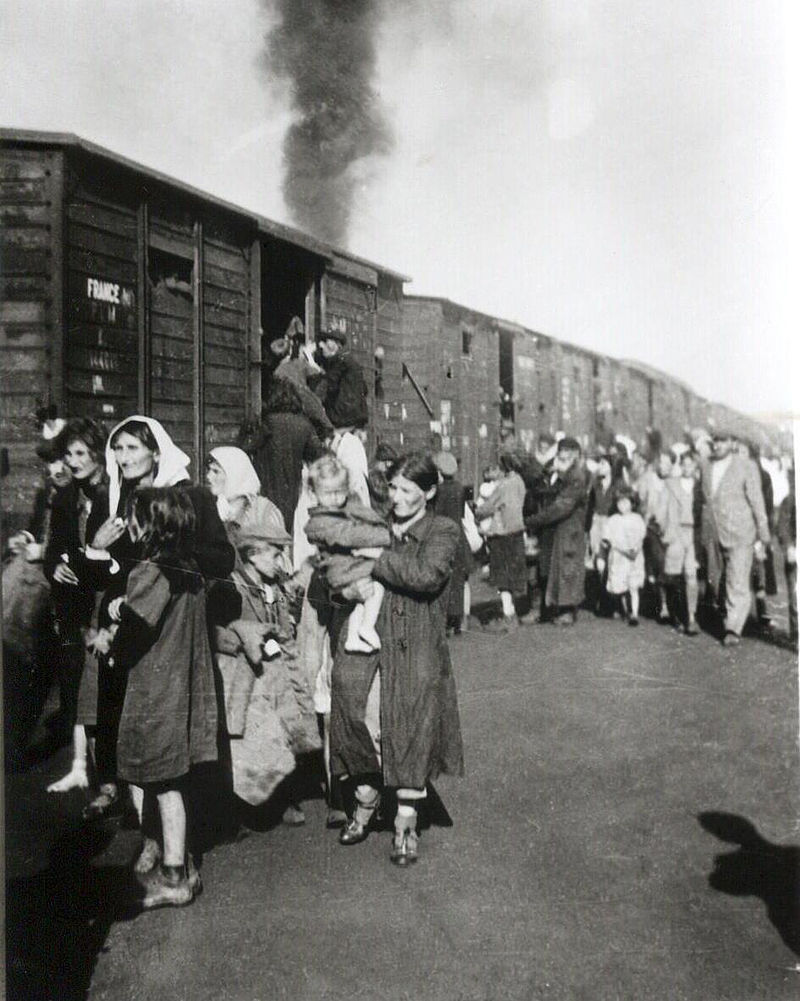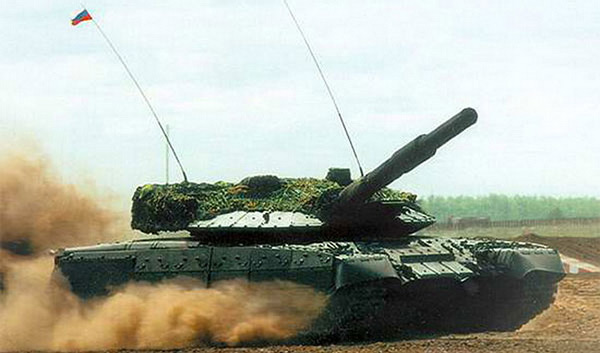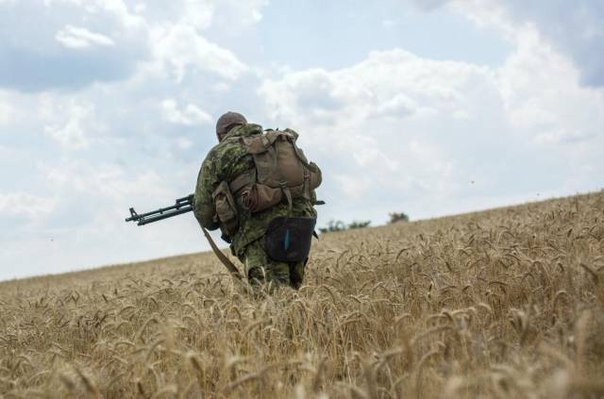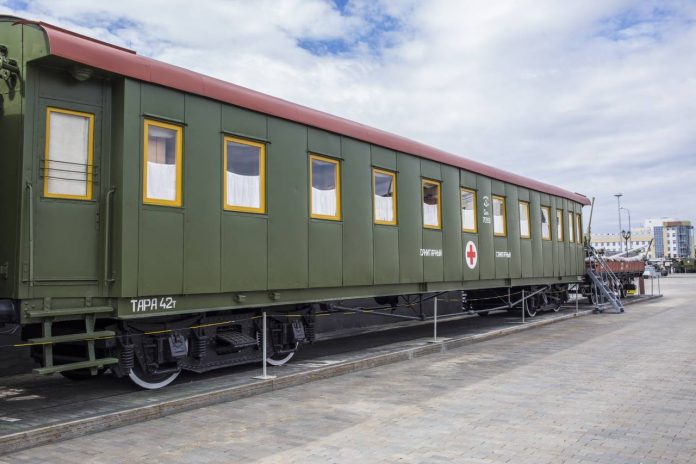
Today our story is not about guns, quite the contrary. About, that stood on the other side of war.
The personal stories of almost every fighter, whether ordinary or general, there are episodes, who really were on the verge of death, and the stories often served in a humorous vein. This episodes injury and subsequent treatment. Hospitals and hospitals are perceived as a kind of flashback resort. Lie on white sheets, Eat pills, discusses the problem of light or heavy arms nurse, that every 4 hours pricks in your suffering another stab.
Today's article about the hospital trains, by which doctors have saved more than one hundred thousand Soviet soldiers and officers.
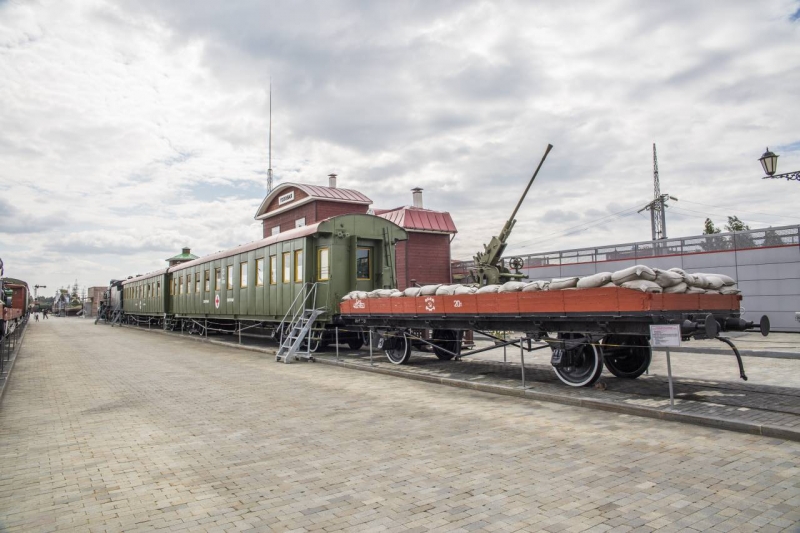
trains, a feat which has consisted in, These compositions were on the edge, at the front end. They did their job.
by the way, for many readers, which are not specifically interested in the history of the hospital trains, understanding of their work at the front came from the cinema. Remember the movie «For the rest of my life…»? Probably, it sounds strange, given the specificity of the cinema, but overall the film is very truly shows the combat path of conventional sanitary staff.
Furthermore, the authors did not invent anything. Hospital train, which is told in the film, there really. This military hospital train №312, formed on the Vologda parovozovagonoremontnom plant in the early days of the war. In his first trip train left already 26 June 1941 of the year. The train crew consisted of 40 health workers and railroad.
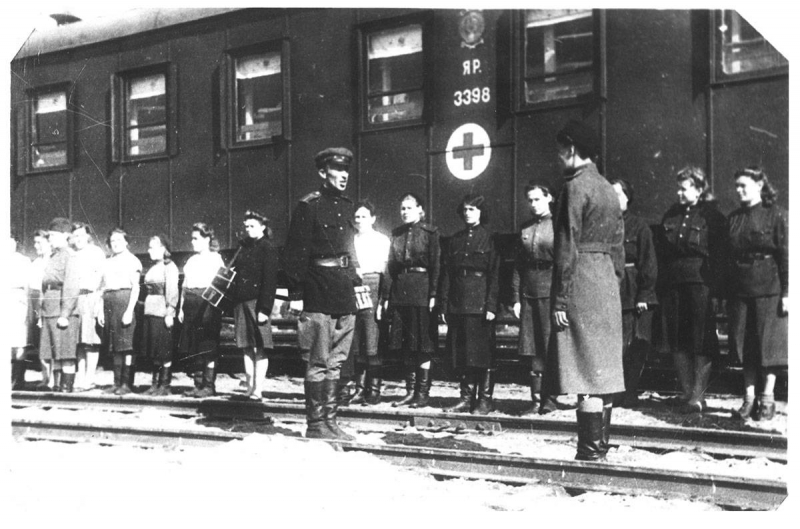
Contribution to the victory of the train can be expressed in two digits. During the war, the train passed 200 thousands of kilometers! In fact, a distance equal to the five round the world itineraries! During this time, it was evacuated from the fighting zone and transported to the rear hospitals more 25 000 wounded! One train and two and a half dozen of thousands of lives saved… Wagon Museum of the train stands today on the territory of the Vologda repair depot.
The need for the military hospital trains understood all. This explains the rapid response of the USSR controls. Already 24 June the People's Commissariat of Railways (NKPS) I ordered the railways to form 288 hospital trains. It has been allocated for these compositions 6 000 cars, defined by the state railway workers in teams and locations of trains formation.
understanding, that immediately create a number of fully-equipped trains can not be, and the trains were needed different, People's Commissar of Railways train divided into two categories. standing (150 compositions), fly from the front - rear hospitals and temporary (138 compositions), the so-called sanitary flying detachment. Briefing intended for transportation of the injured to the nearest rear.
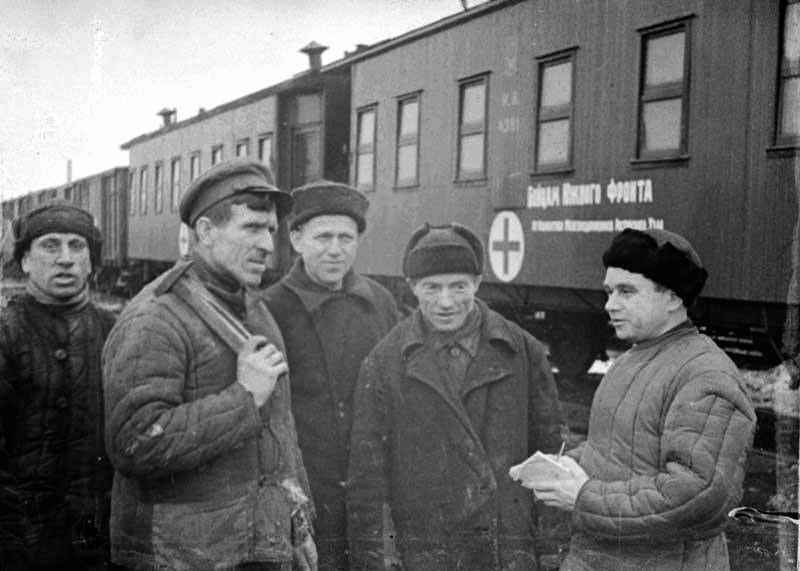
Very often in photographs of the time we see it flying detachment. The composition of freight wagons, equipped for easy transportation and seriously wounded, pharmacy-dressing wagon, kitchen, wagon for maintenance and medical personnel. by the way, movie episode «officers», when there is a loading wounded almost under fire, - it is almost a daily routine such letuchek.
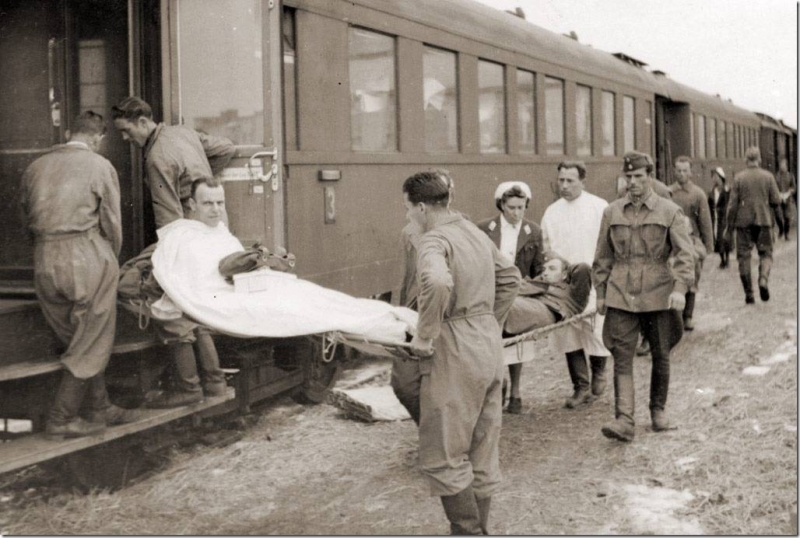
Commissariat ways communications system has been, and remains, even today, quite militarized. shoulder straps, we see on the railway workers, not a fad. This strict, almost military, hierarchy. That is why, an indication of the people's commissar performed in time. And monitor their implementation was hard. The country could not afford sloppiness.
For example, tell you about just one episode of that war. episode, which should be remembered! The rolling shop of the Tashkent parovozovagonoremontnogo plant received a combat mission - to prepare the train for special purposes. Equipment for them has been received. It required to produce it in place.
Machines for the seriously wounded manufactured brigade of women and teenagers under the guidance of an experienced master Lukianivka, evacuated to Velikoluksky wagon factory. They worked around the clock. people understand, it is necessary to cope with the task as quickly and as best we can.
In September 1941 Year of the rolling shop went to the front first three sanitary train, in the next two months - four more. In December immediately sent to the front five formulations with red crosses. 12 fully equipped for trains 4 of the month! Is not it heroism?
In conditions, when the Luftwaffe dominated the air, a tank wedges penetrated our defenses in different locations hospital trains have been the object of constant hunt pilots and tank crews of the German Army. They did not bother the presence of the Red Cross and the lack of train protection. Russian people do not. so, destroy them you need without regard to any treaties and norms of morality.
Trains were returning from the front at least «wounded», than those, whom they were brought to hospitals. points were organized at many stations such repairs «wounded trains». Here's how to describe the operation of such a reference point repair Kuibyshev station in a book «Railway workers in the Great Patriotic War 1941-1945 years»:
«At the Kuibyshev station organized a foothold repair military hospital trains. On some days, arrived here on eight trains. All they had to be carefully examined, inspect and repair the heating system, water, lighting, insert broken glass. Labor intensive require body repair, roof, internal inventory.
Special efforts initially delivered Poluda boilers food kitchens. A senior master. FROM. Gavrilov found among evacuees tinsmiths and tinkers. Once it became easier. Lacked lumber. Also found out - have become caught in the Volga River driftwood and deliver its vehicles on the sawmill.
One day, I called the military commander of the station With. A. Novynskyy: "By the next morning it is necessary to repair and send to the front 8 military hospital trains ". And on the way for another five - and three in the Kuibyshev Transit. All needed repair. Available labor force do not, and so people work two consecutive shifts. Who can bring?
Mobilize all the engineering and technical personnel. Senior Master Kuibyshev A train depot. n. Kuvanin remembered his experience in forging, I went to help workers. Among railway and political instructor of one of the trains - Gray. Repairs completed on time, train and went to destination«.
And another document, that it is impossible not to quote. For memory…
Extract from the order of the chief of military-sanitary management of the North-Western Front on 14 Martha 1942 of the year:
«At the initiative of women zheleznodorozhnits, activists of the station and the city Bologoye, -military and women to the Women's Day gift in Northwest edge formed military sanitary leafjet № 707.
As a result of a love relation to the case on the part of women, involved in the formation of the military-sanitary flying detachment, it is equipped with a view of providing the best possible facilities evacuees. Caring for wounded soldiers, Defenders of the Soviet Motherland, She led the women workers, Given our front this train.
For the valuable assistance of the military-medical service front, for taking care of the wounded soldiers and commanders to declare gratitude,. A. Zybin - Third oiler rolling portion, P. B. Vihrova - instructor of women's work, A. n. Osipova - workstation Bologoe, M. A. Bubnov - housewife ...»
After a brief excursion into the history of the emergence of the military hospital train in the Soviet Union during World War II turn to the hero of our story. so, permanent hospital train of the Red Army. Two carriages precisely this composition are presented in the Museum of Upper Pyshma. Yes, it is not part of the full, but quite significant artifact is from a medical point of view. Train composed of, wagons. Wagons for light and heavy wounded soldiers.
Unlike sanitary letuchek, where the main task was to provide first aid and speedy evacuation to the rear, permanent hospital trains were hospitals on wheels. Simply put, already during transport of these trains were treated the wounded and sick.
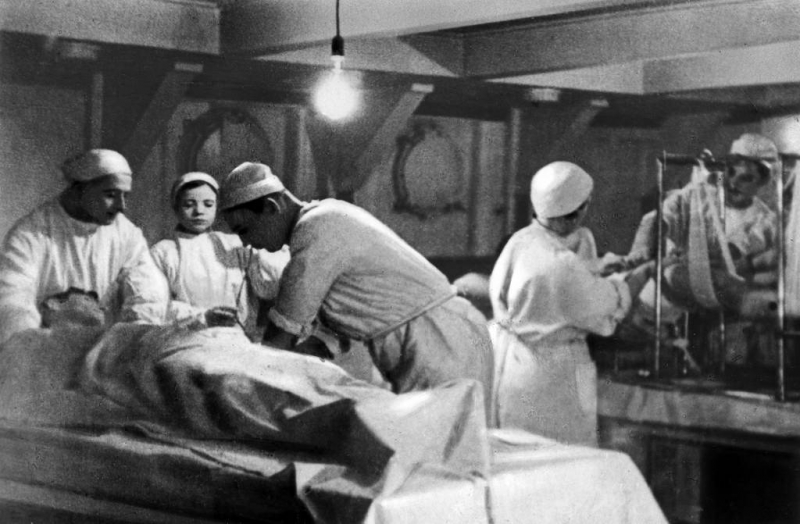
That is why, when compared to trains and flying detachment evakovozmozhnosti, the comparison is not in favor of the train. On average, one could briefing in one trip pick up 900 wounded! Exactly the same train of constant composition can accommodate as much as possible «Total» about 500 human.
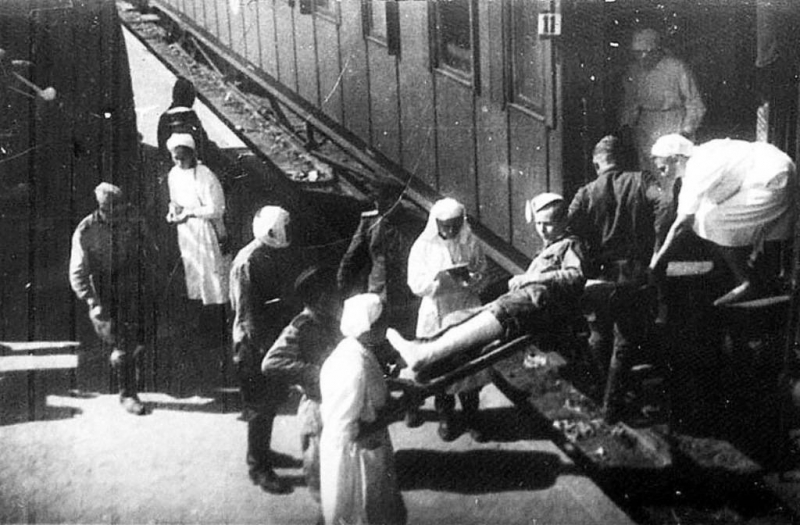
Another important question - how much in percentage terms would have made it to the hospital.
What is it like to the military hospital train? Start immediately followed with another quote. Quotes from the memoirs of direct participants of events, cruised on the legendary, we have already mentioned, train №312.
About, what were the military hospital trains, I wrote Vera Panova, book author «satellites»:
«At long sidings, near some long za6opa, He was handsome train: freshly painted dark green cars, red cross on a white field; on the windows - a dazzling purity linen curtains embroidery. It never occurred to me, when I'm with my tiny suitcase I was part of the staff car, role in my destiny to play this train, - or rather, people, to which I go. These people lived on wheels for nearly three and a half years: From the first days of the war, they gathered on the train, and with honor, blameless carrying his service blahorodnuyu».
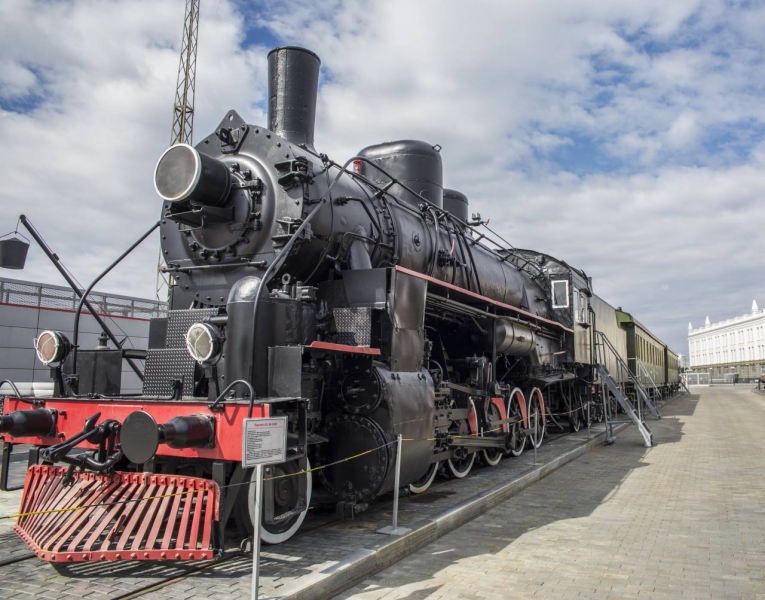
so, train consisted of a locomotive as part of one or two locomotives. Number of locomotives could be varied depending on the capabilities of the railway and train distance flight. Further followed passenger cars for transportation of injured. The wounded were placed on the degree of danger of injury. Seriously wounded were placed in special cars, located close to operating and other special wagons.
Specialized wagons for treatment and surgical operations were in the middle of the composition. And, medical space in such cars have been equipped so, that could easily be transformed. So, operating tables except for the basic functions, and were more places for bandaging the wounded, for bedridden bathing wounded etc..
Let a car. How many man-hours of labor, hard to say, but the car has been completely restored according to the photos of those years.
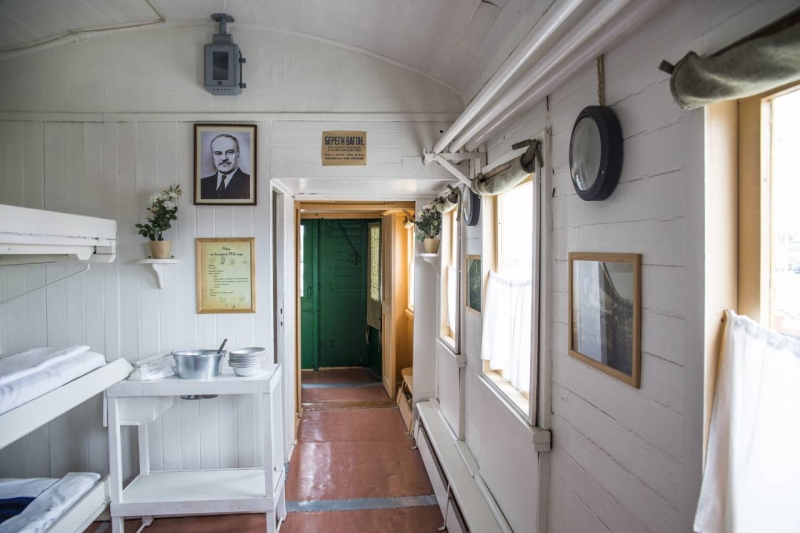
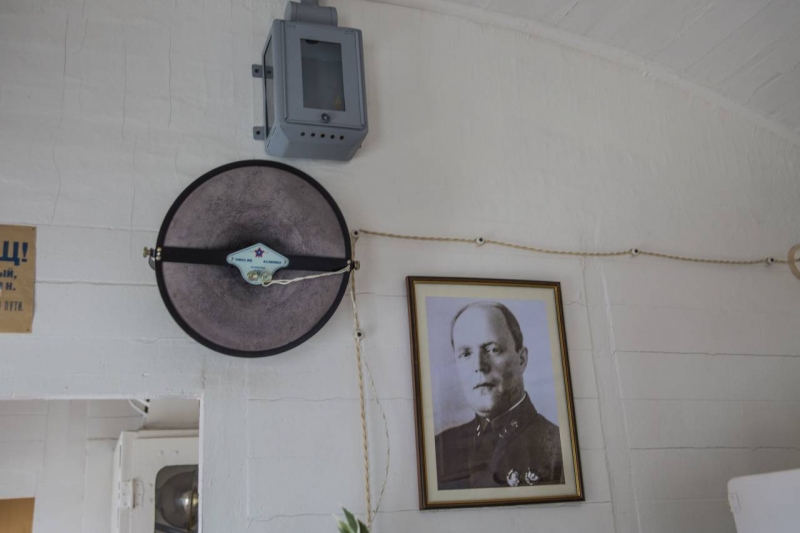
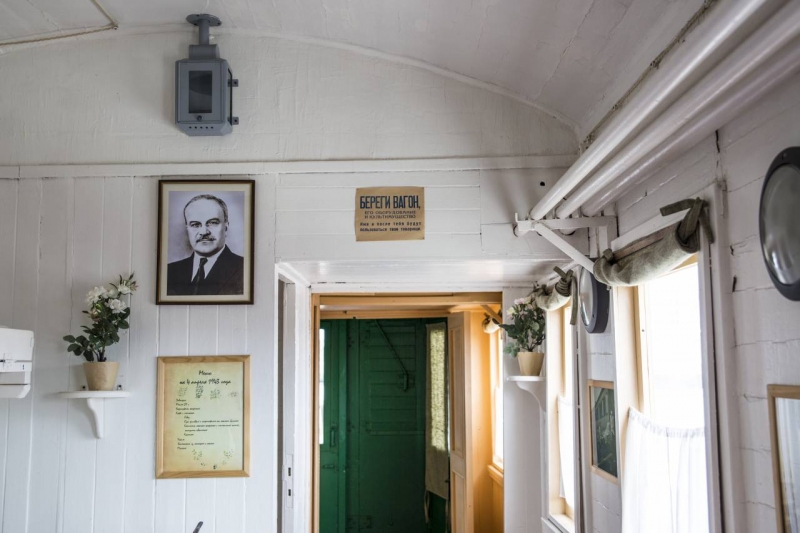
Interesting, true? by the way, many photos exactly: wagons portraits of Vyacheslav Molotov, even more appropriate would be a portrait or Stalin, or Kaganovich (Commissar of the People's Commissariat). Although the People's Commissariat of the then present Ivan Kovalev, Lazar Kaganovich replaced as People's Commissar in the People's Commissariat 1944 year.
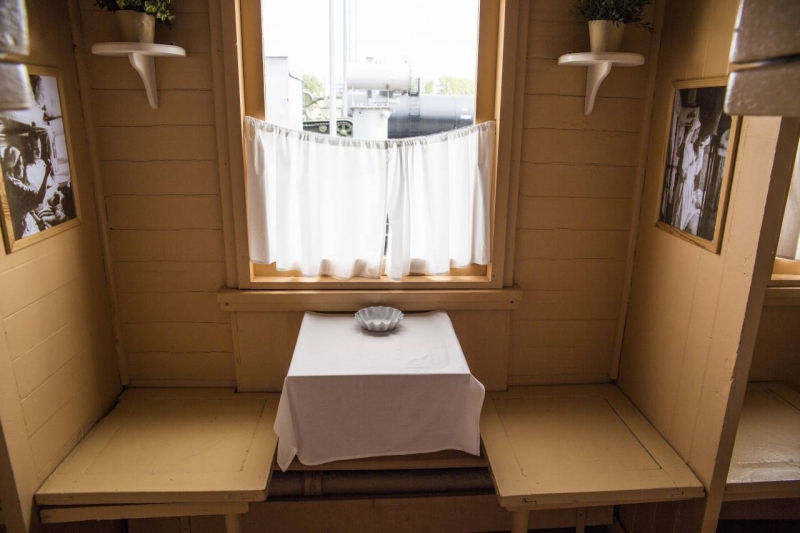
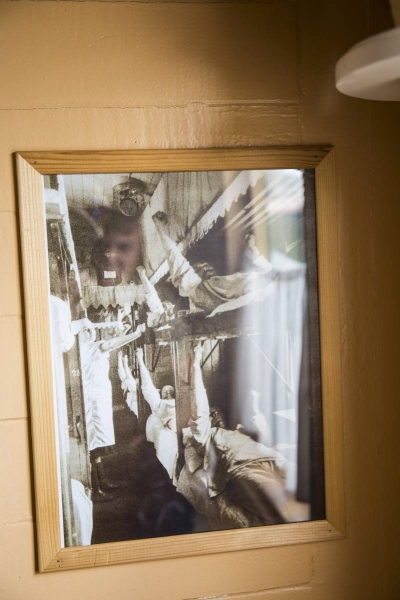
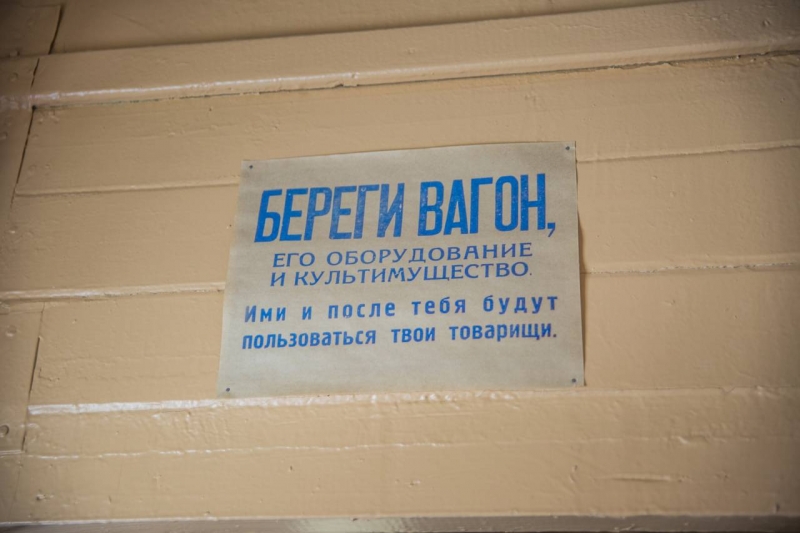
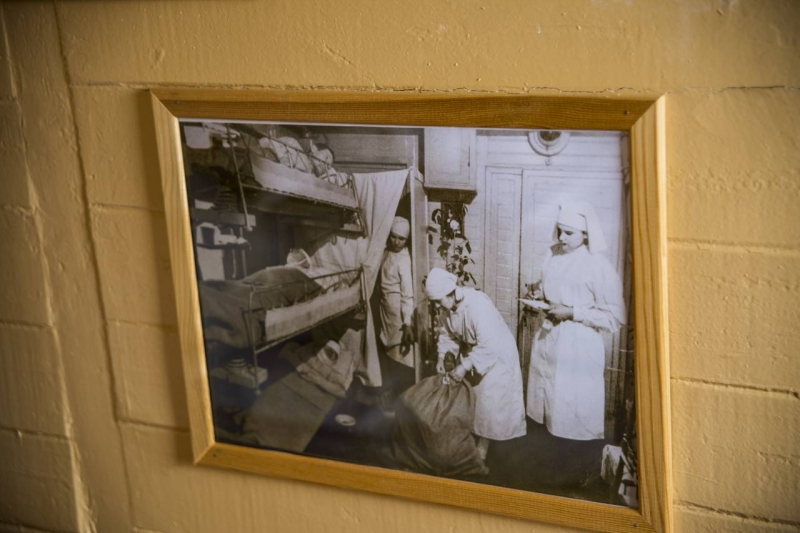
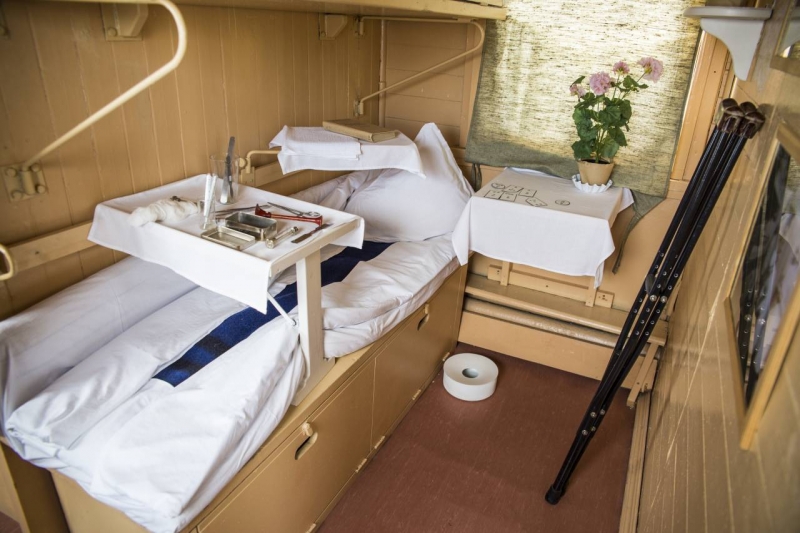
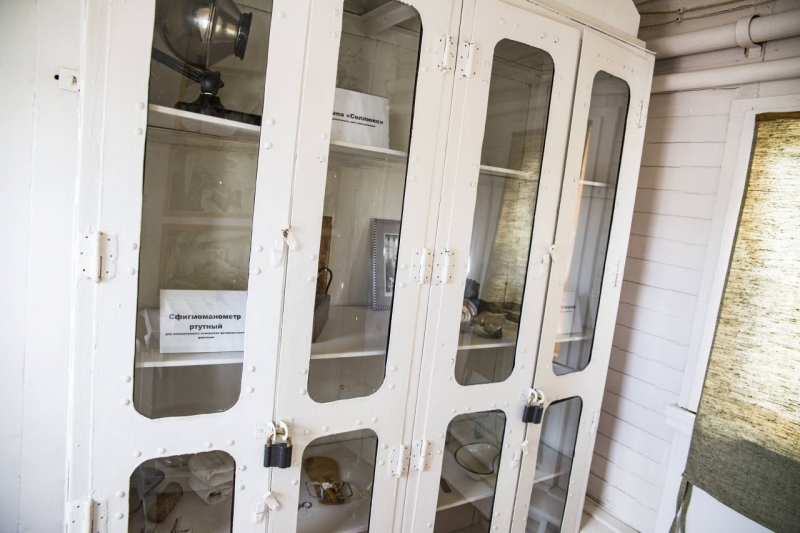
Wardrobe with medical equipment. Tonometer, Esmarch device, UV lamp.
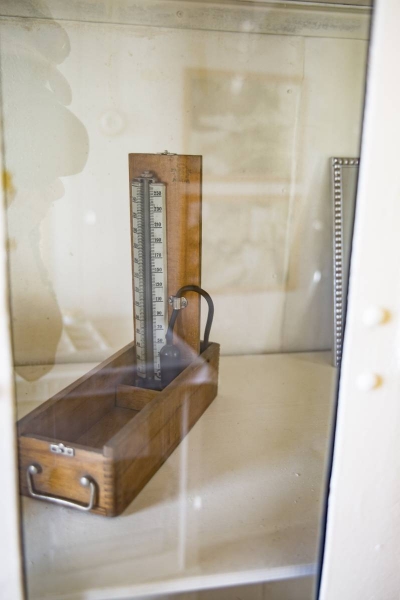
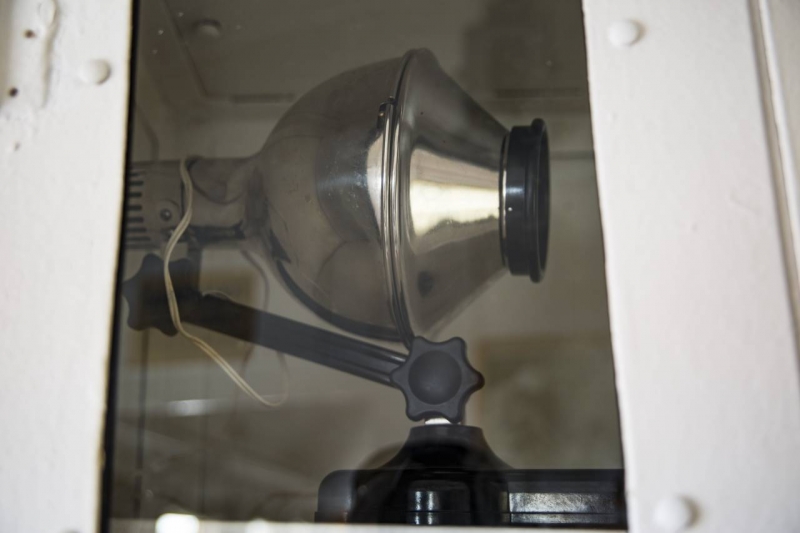
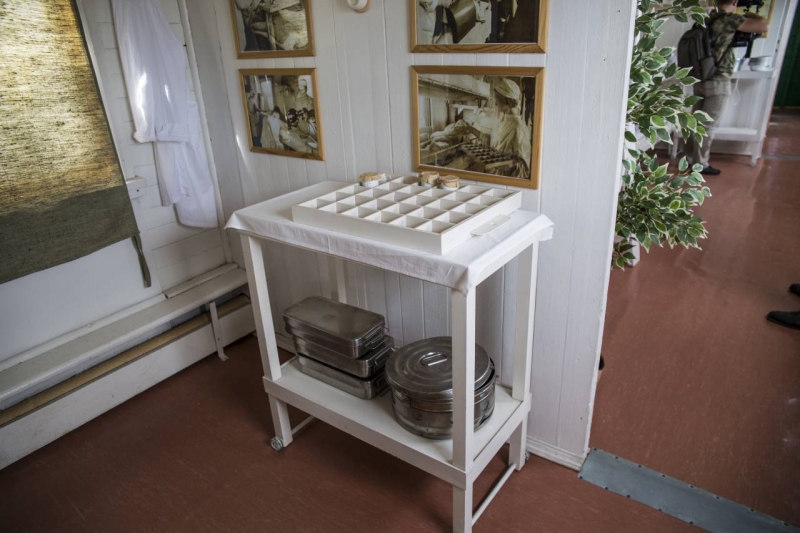
Table for distribution of medicines.
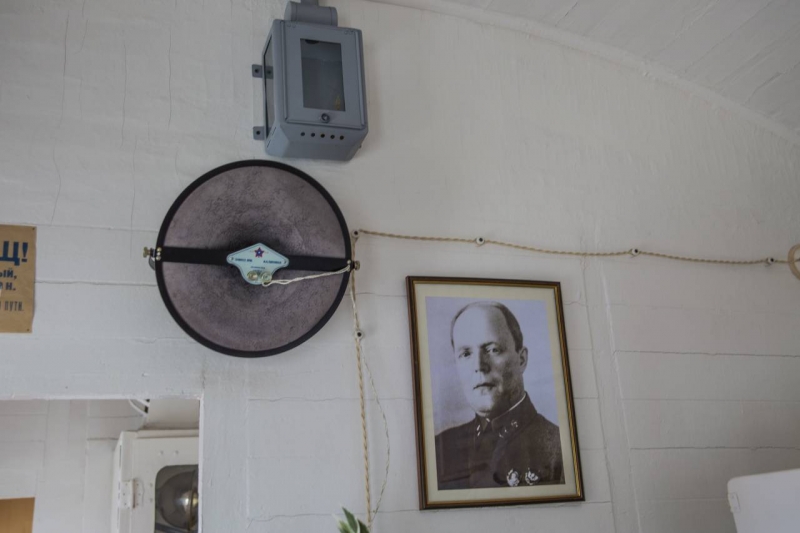
«Plate» radio - operating. In the car, there are two, connected to the MP-3 player, and quite a decent play recordings.
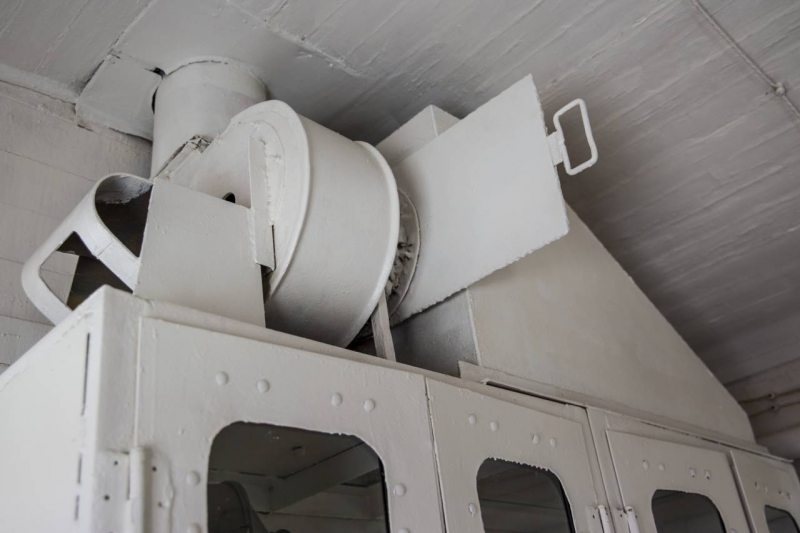
Ventilation. It looks very confident, by the way.
hozblok. medicines medicines, and the food necessary for all.
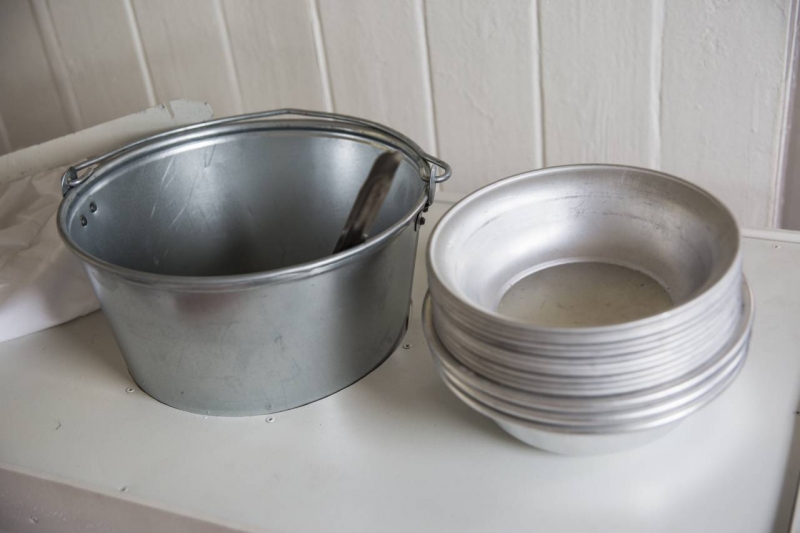
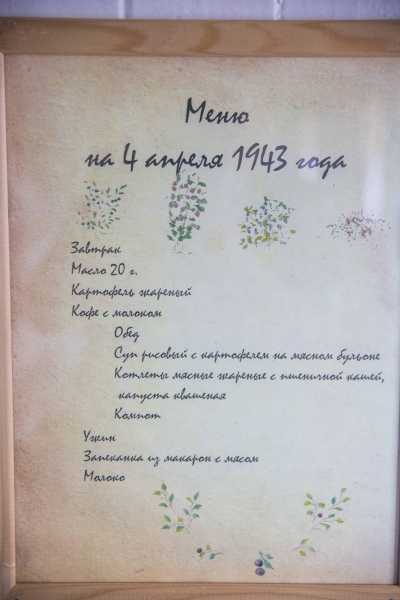
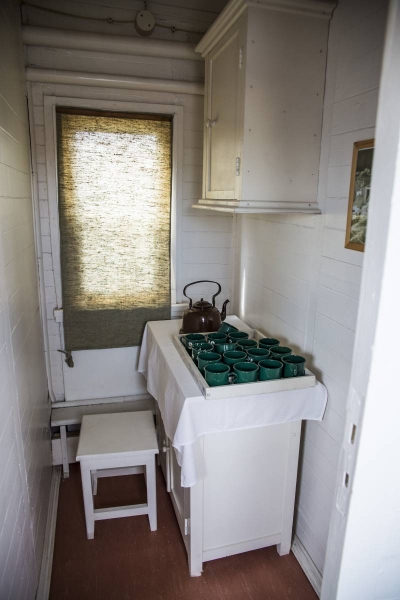
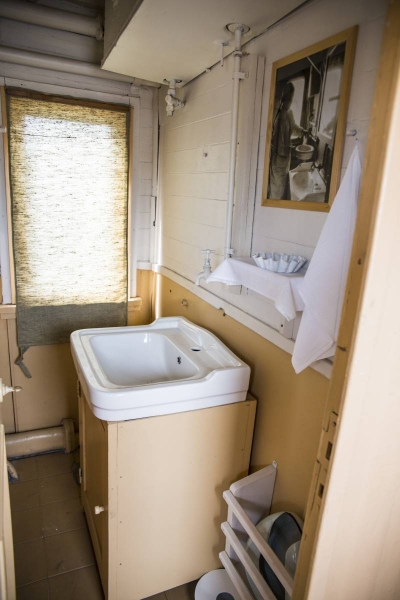
Pharmacy. As usual for the time format. Formulations were few, mainly dose prepared on site in the form of powder or injection.
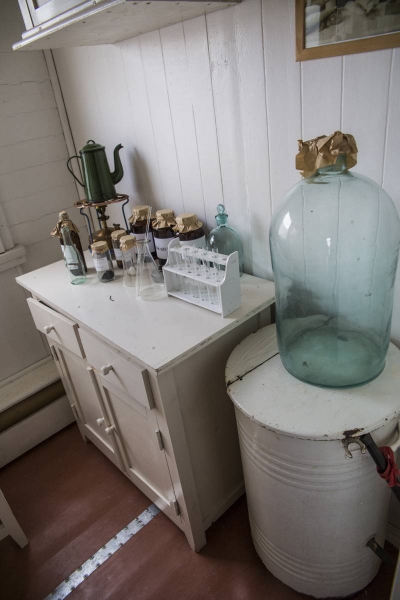
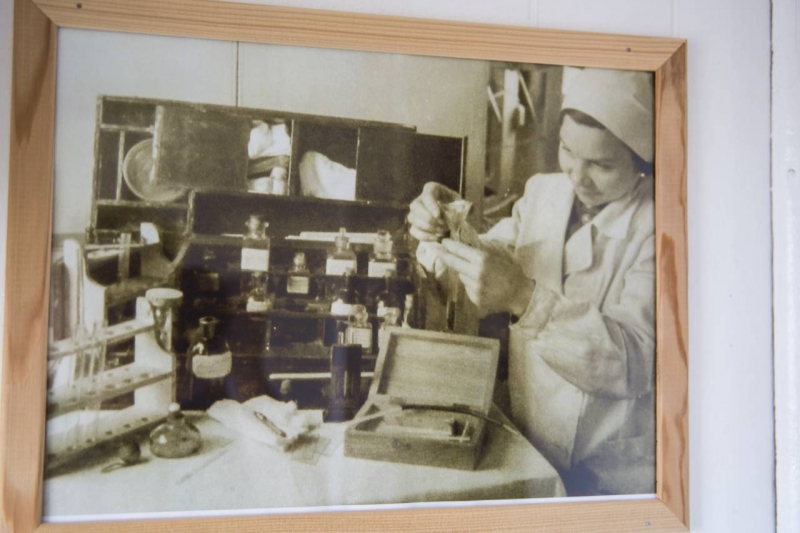
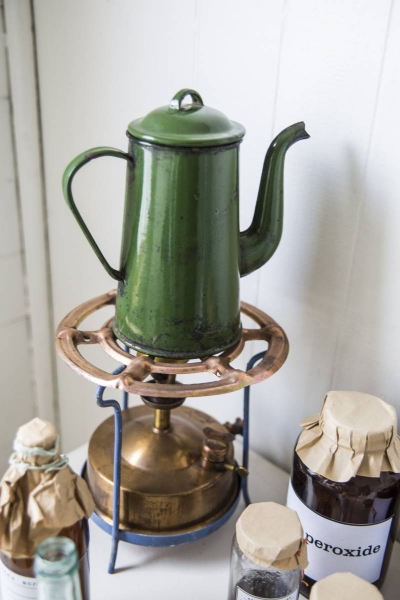
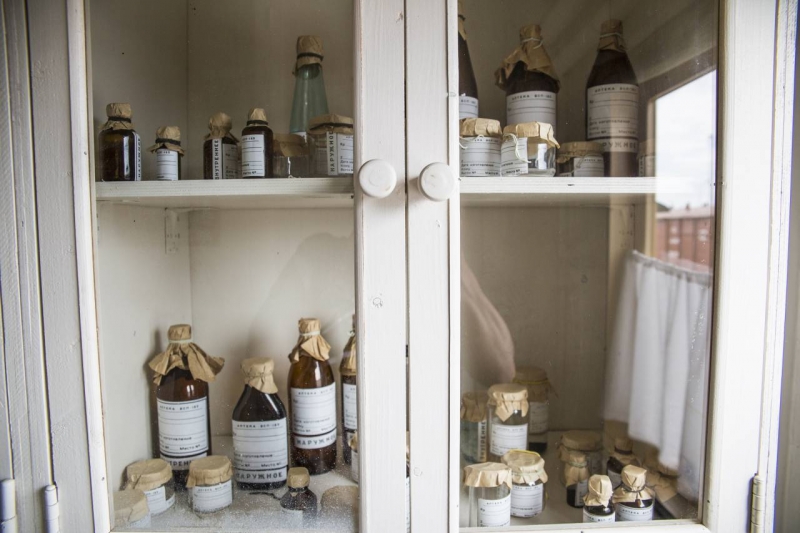
Well, the car itself. Where it is easy to distinguish the wounded can be quite easy. Bedridden and seriously wounded soldiers were placed here on these bunks in three tiers.
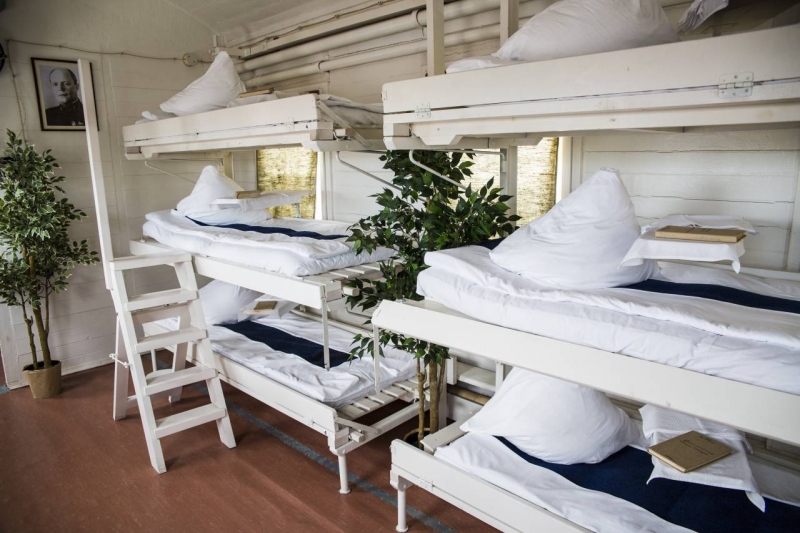
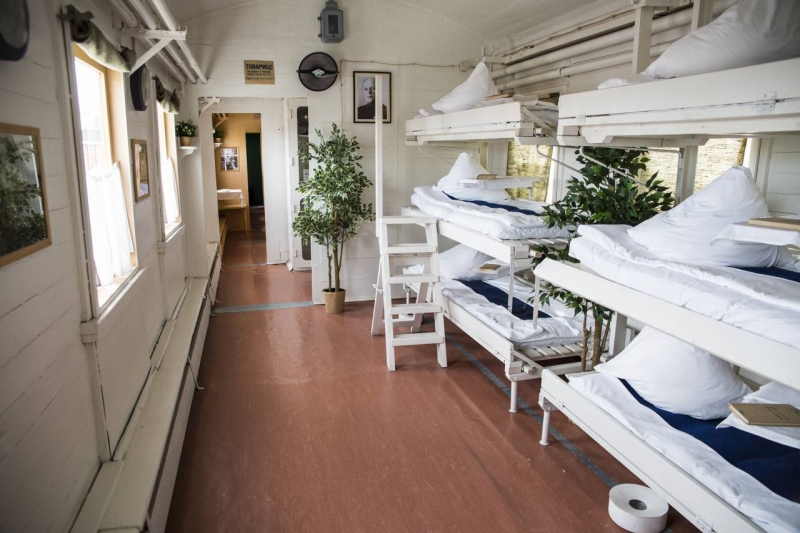
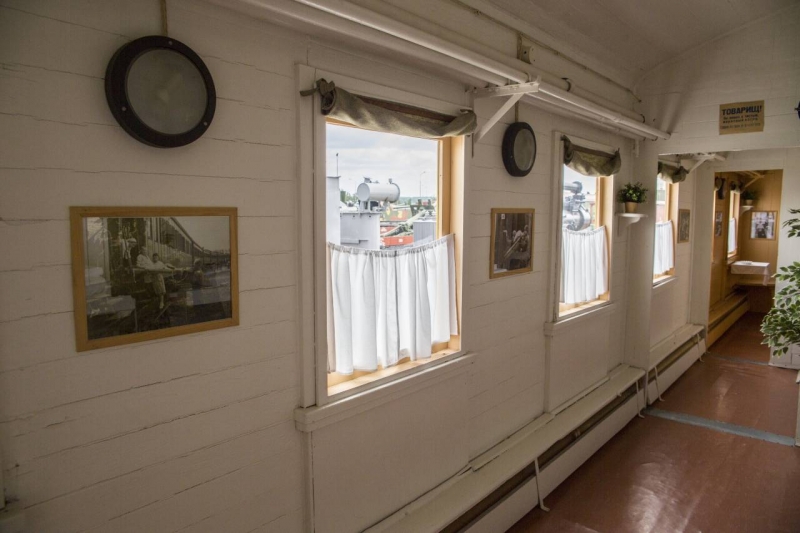
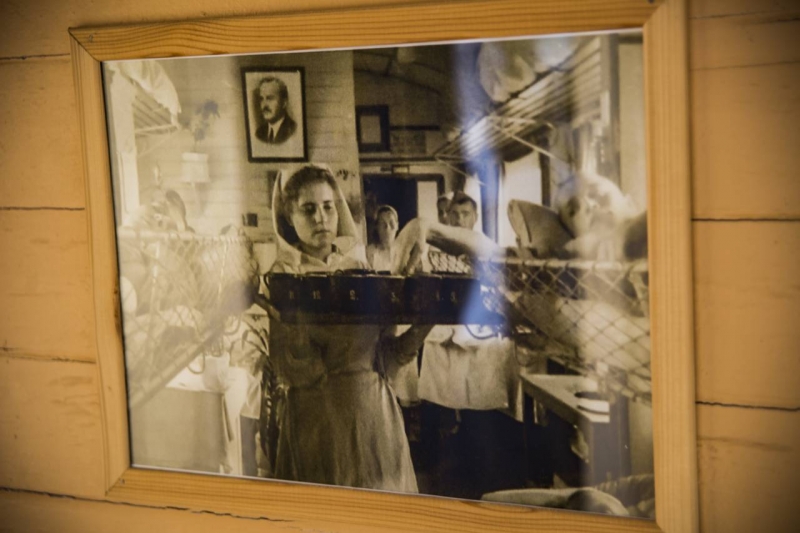
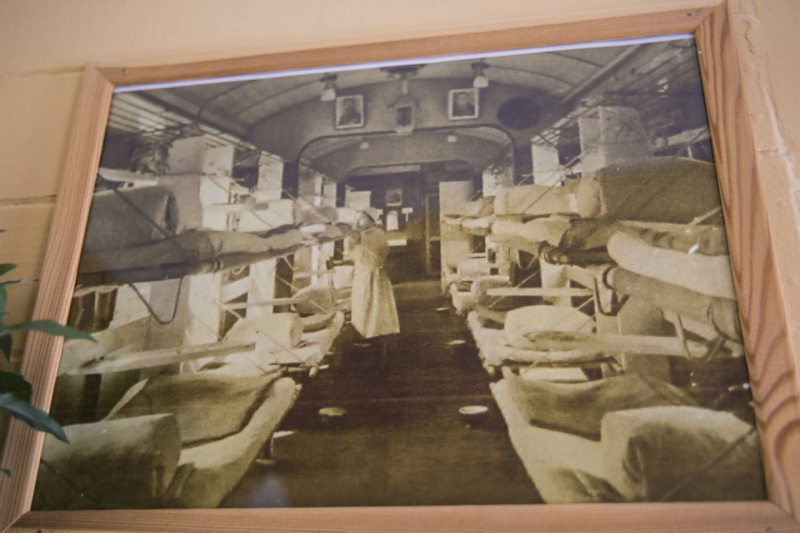
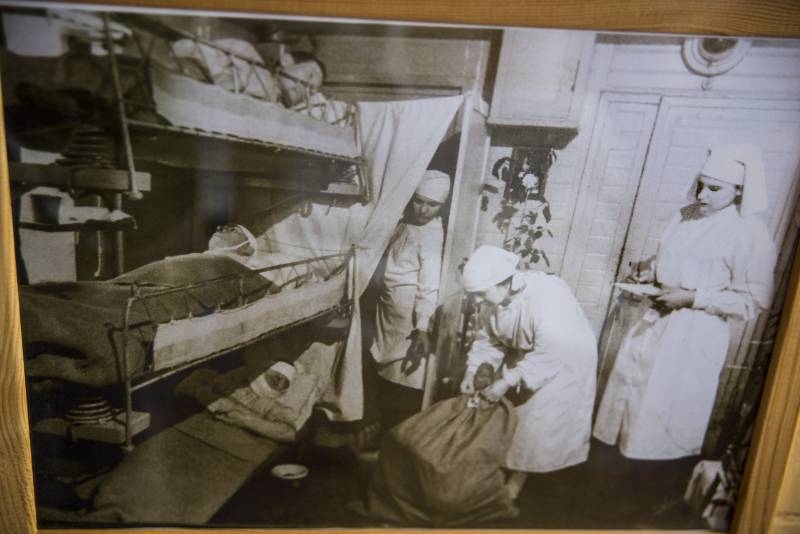
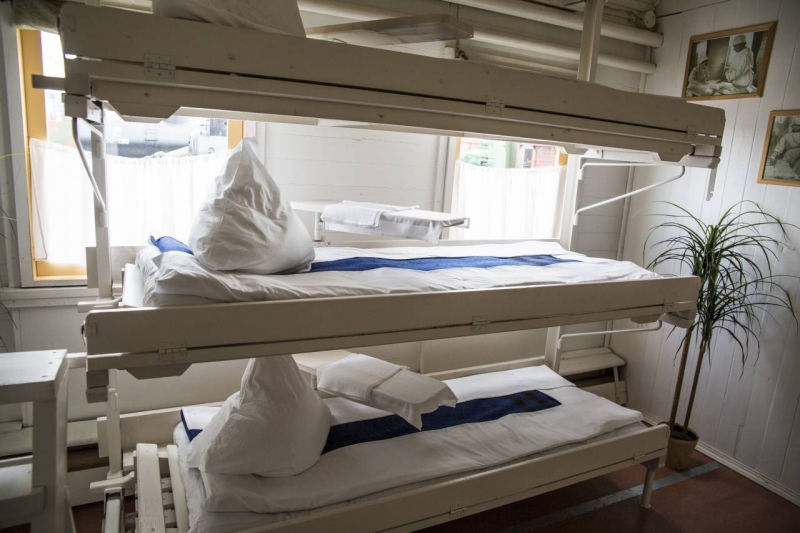
Dressing-procedural and operational. Depending on the needs and skills of medical staff.
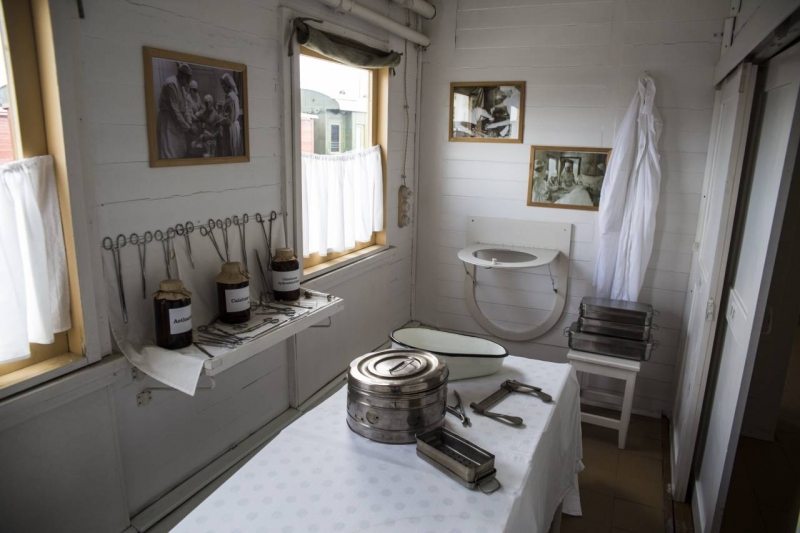
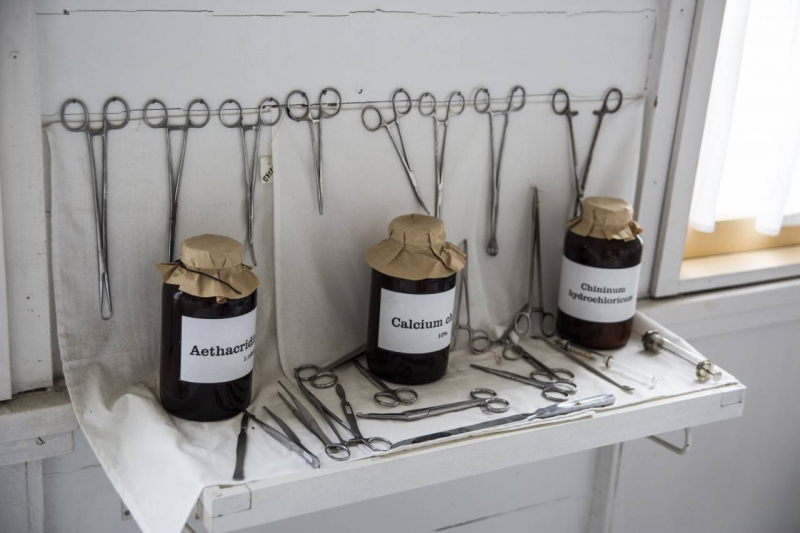
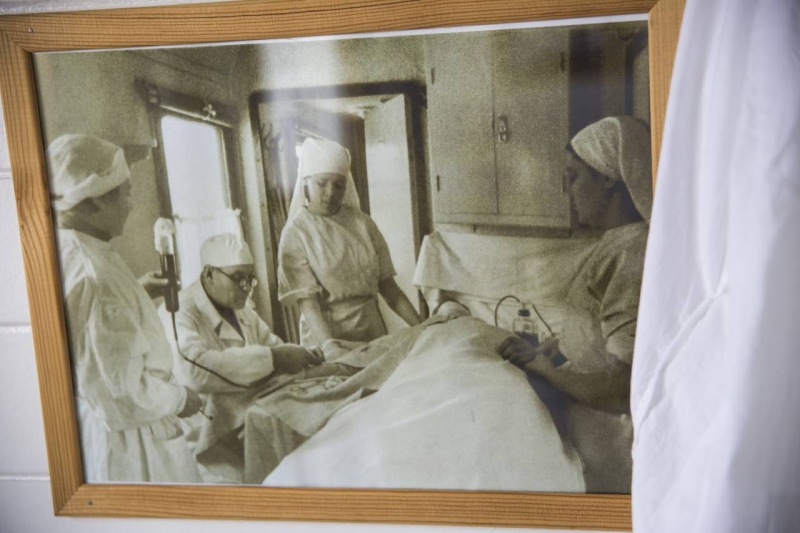
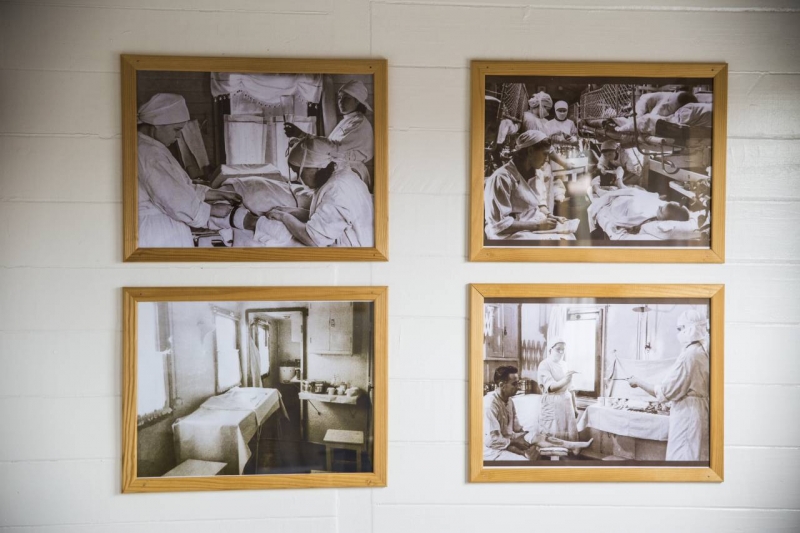
by the way, easy movement… Well, not exactly, but quite normal dressing room can be transformed into:
- dining room for getting up;
- Red Corner;
- bath for bedridden patients.
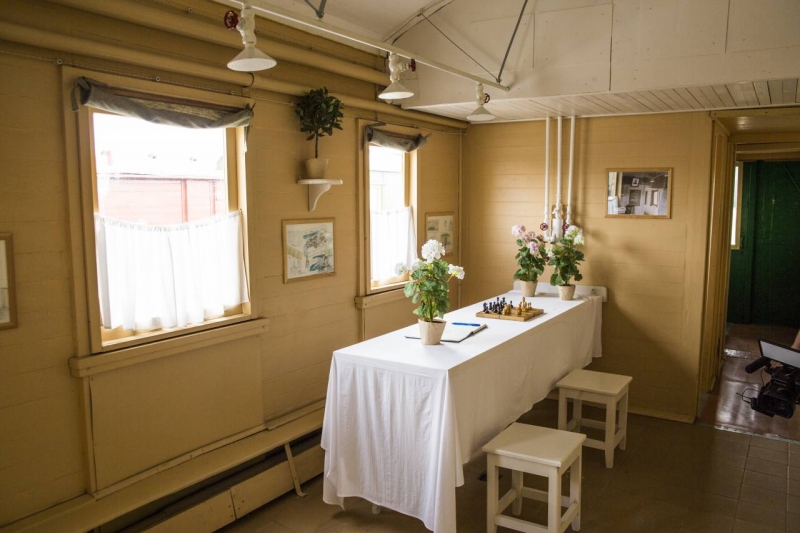
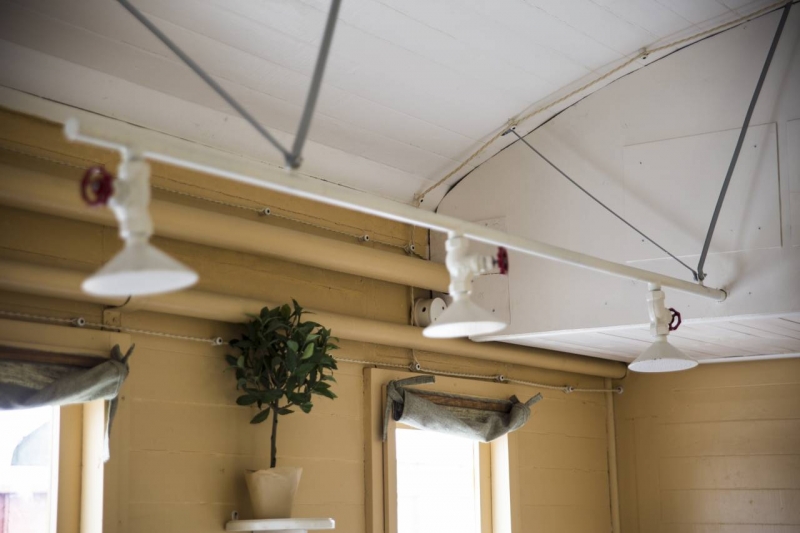
Here in the pipe with a watering can was hot (!) water. From the boiler of a steam locomotive.
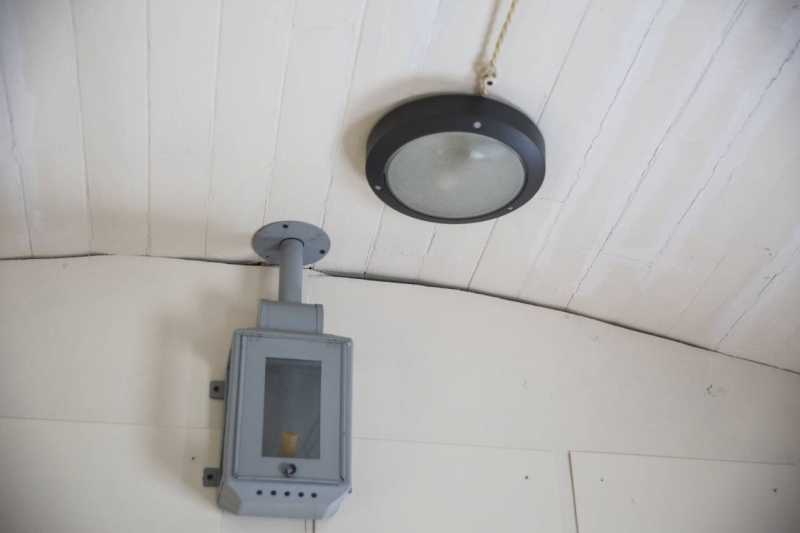
electric lighting. But if you want or need, and could in the old, candles. Without the danger of something to burn.
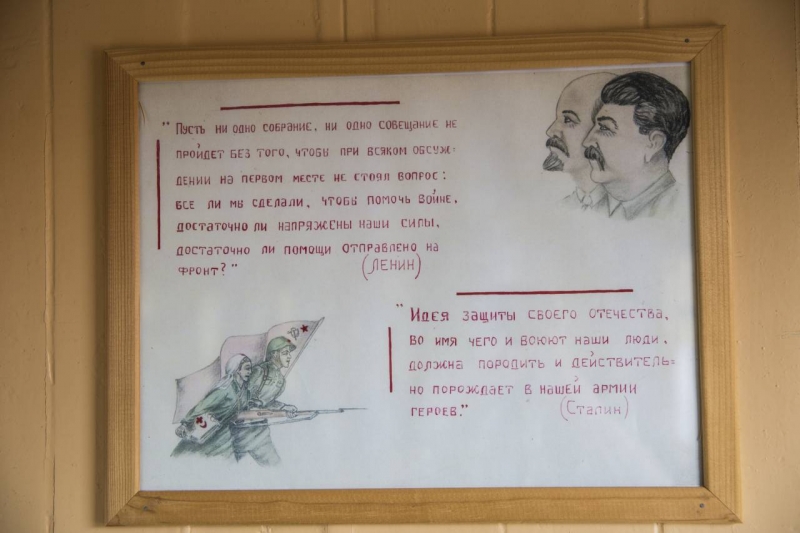
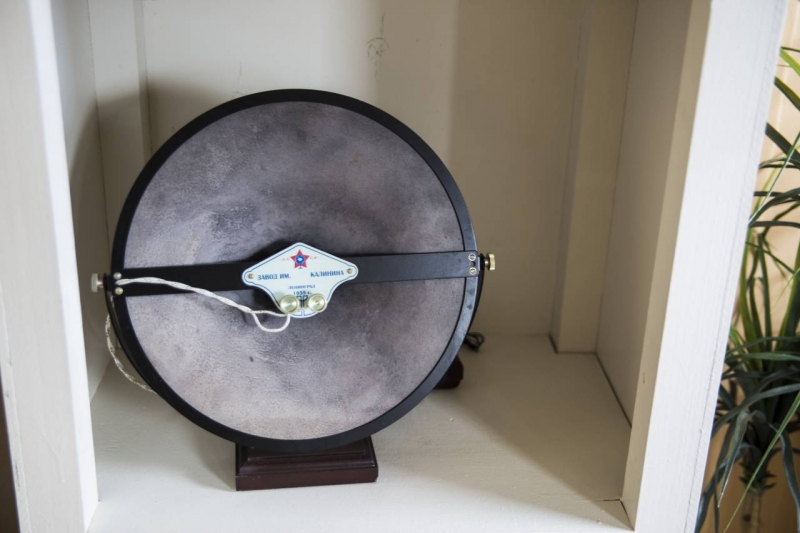
The second radio speaker, and because of him sticking a modern player.
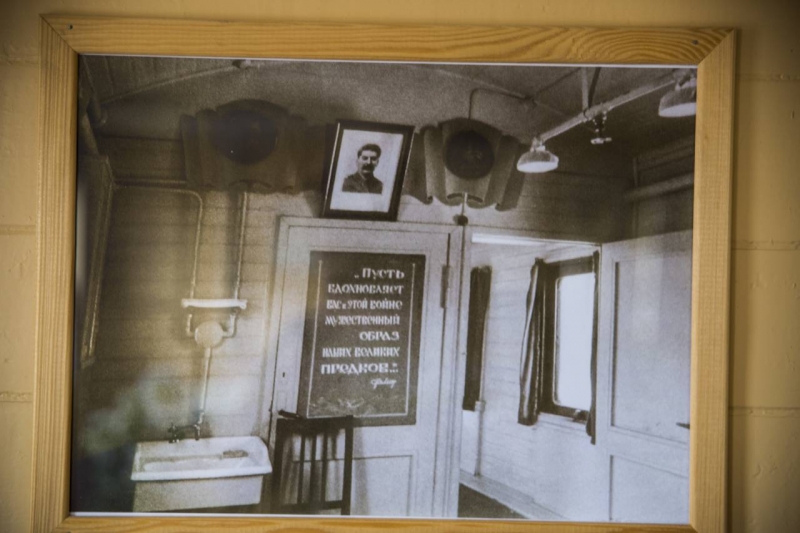
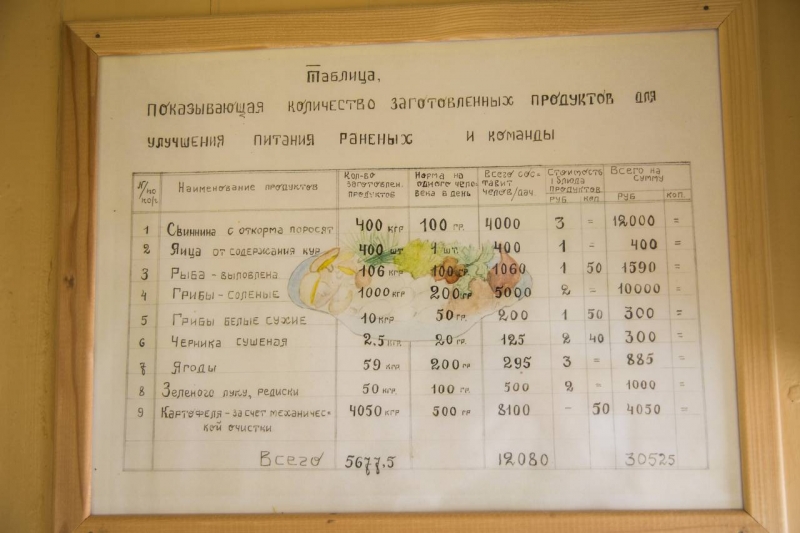
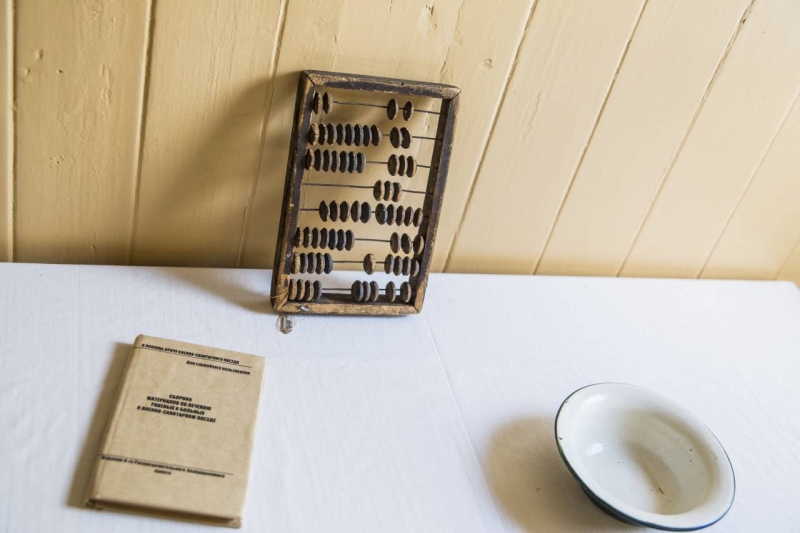
Coupe staff. And then sewing workshop.
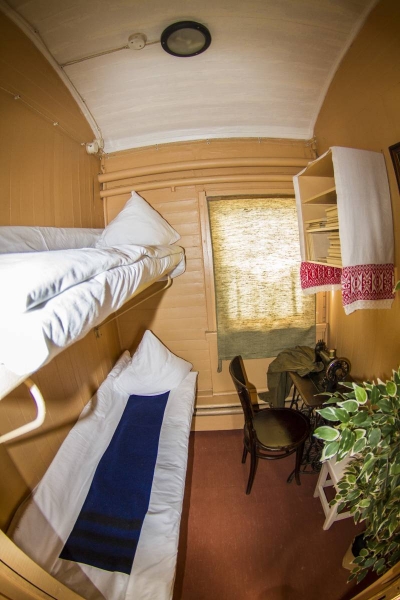
In addition to specialized medical cars, The train was Auxiliary cars: wagon for the personnel of the train, dining-kitchen, Cold pharmacy, wagon morgue ... The existence of these varied cars. For example, morgue wagon was often absent due to the fact, what, according to the special order of the chief medical officer of the Red Army, the dead soldiers were removed from the train at the next station and transferred to the local hospital for burial.
Paradox, but in the hospital trains reigned the same order, as well as in-patient hospitals. the, what wrote Vera Panova, not the exception. This rule is! rule, non-compliance with which was punishable to the fullest extent of wartime conditions. How it was possible under conditions of constant or nearly constant, given the time to repair after wartime adventures, of movement, we do not understand.
Wherein, according to the memoirs of the participants of events, in such trains could meet completely unimaginable for railway INVENTION. So, on the roofs of trains often be seen ... garden! A real garden, boxes, which grew herbs for the wounded. And out of the cars could be heard clucking and grunting. There lived laying hens and piglets! Yet again, for a variety of food wounded. by the way, the authorship of the invention is attributed to all the same 312 train…
There is still time, which I would like to tell. Above we mentioned the inhumanity of the German pilots and tank crews. But there were other. From the very beginning of the war against the Soviet hospital trains by an active sabotage. And «worked» of trains not only Germans, but TN. pests from among Soviet citizens.
«In my eyes the Germans bombed the hospital train, - says the veteran of the Great Patriotic War Ekaterina Kovalenko. - When all were evacuated from Dnepropetrovsk, I was part of the hospital train. At station Node-standing Nizhnedneprovsk, waited, that will give «green» shine. And we had just a little drive - under Novomoskovsk, in Orlovschine, It was our base hospital. But the dispatcher at the station turned out to be a threat: he not only did not let our train, who was standing on the tracks between the two fuel compositions, but also signaled to the German Air Force, who should bomb».
Orderly Levitsky Leonid Semenovich talked about, How to work in our rear saboteurs:
«During loading of the wounded, in the air there were two fighters - one of our, and the other German. German aircraft shot down our pilot just above the airfield Vasilkovsky, and after a while to us the injured pilot was rushed. When the German "Messer" turned back, of rocket, from the ground, it was served green signal rocket. Near us was a local resident, who said,: «Do not spend the night in the coaches kids, since this gave him her news signal, that there are military convoys - are you going to bomb».
The next day, at 7 am military hospital train number 1078 attacked immediately 18 German bombers.
article format does not allow to talk about a variety of feats, who committed the railroad and medics GSP. Yes i hope you? enough, that alive the stories of mobile hospitals. those alive, who should have died back then, the war. Alive their children and grandchildren. Is not it a monument to the Soviet military hospital train? Monument, almost every one of us.
It is very interesting to go to these carriages. They do not seem to be big on the outside, but surprised, how many were able to push the builders. And how all rational.
Touching creaking floors, tree smell, all you can touch, everything can be touched. handsomely. But on the other hand you know, what in «battle» state, these cars look quite so. And the speakers are not singing Ruslanova, and their, likely, and heard-it was not for the moans and cries of the wounded.
We believe these two most valuable exhibits UMMC car museum in Upper Pyshma. they, who restored them, We put so much love for our history, that it can not touch the soul of the normal human. Many thanks to these people!







